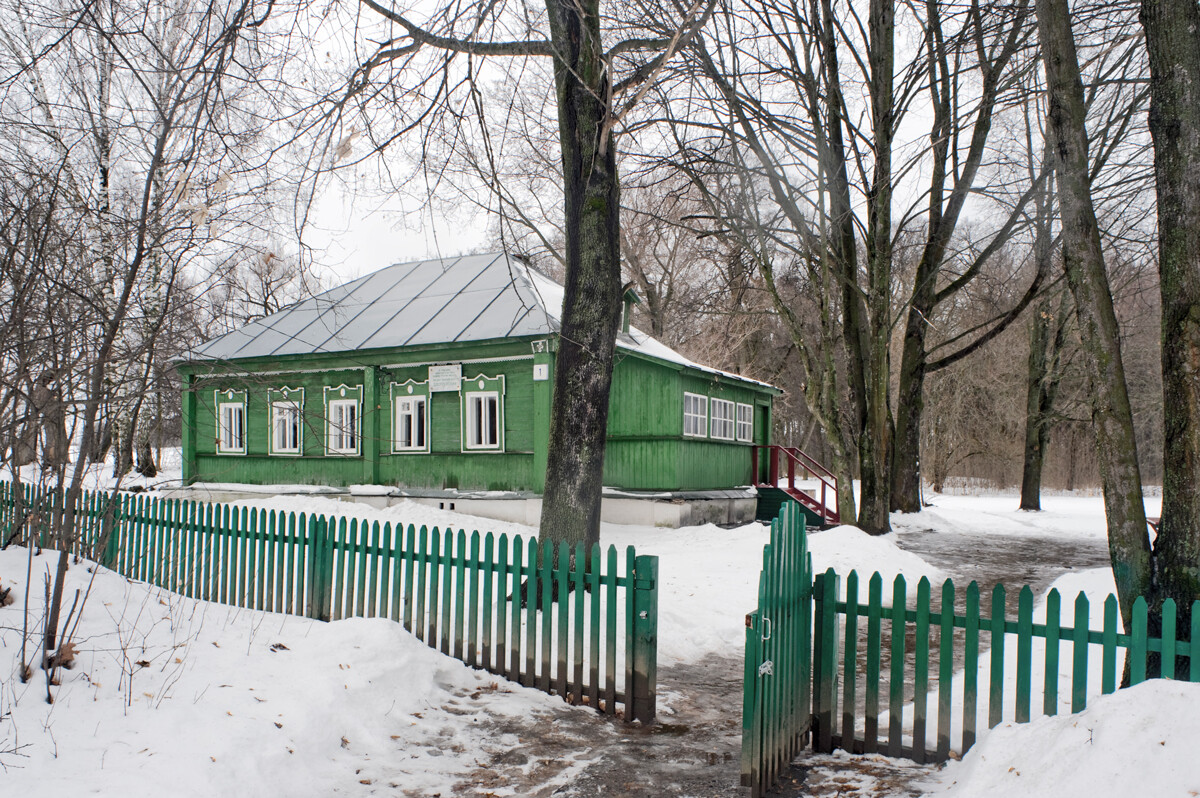
Darovoye. The "Wing," the only surviving 19th-century building on the former estate of Mikhail Dostoevsky, father of Fyodor Dostoevsky. January 3, 2015
William BrumfieldAt the beginning of the 20th century, Russian chemist and photographer Sergey Prokudin-Gorsky developed a complex process for vivid, detailed color photography. His vision of photography as a form of education and enlightenment was demonstrated with special clarity through his photographs of architectural monuments in historic sites throughout the Russian heartland.
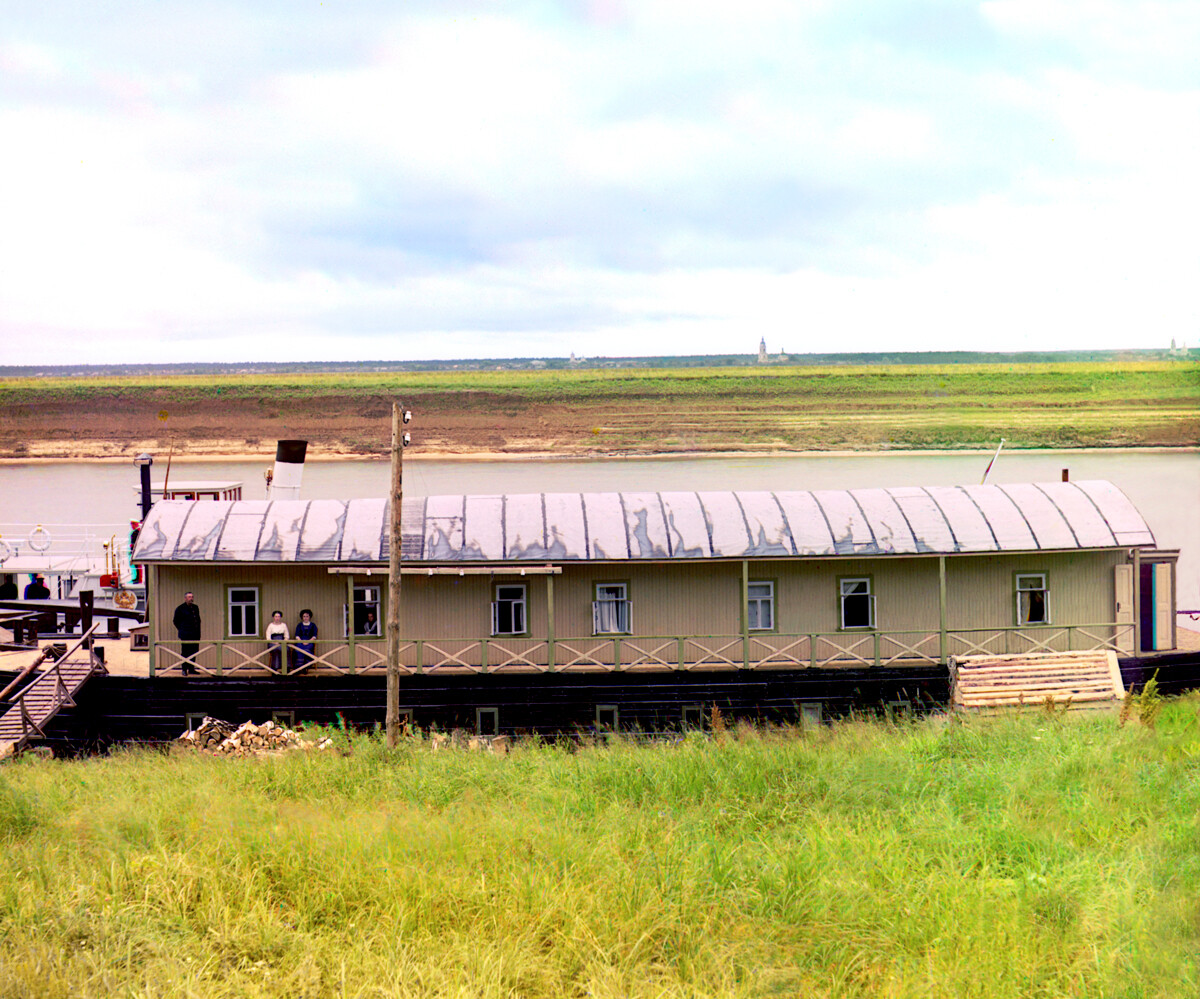
Oka River near Beloomut. Transportation Ministry barge with office and living quarters. Background: view toward Beloomut. Summer 1912
Sergey Prokudin-GorskyAfter a demonstration of his slides to Tsar Nicholas II in May 1909, Prokudin-Gorsky received logistical support from the Ministry of Transportation to facilitate his travels with bulky, technically demanding photographic equipment. In return, he also photographed transportation development projects, such as railroads and canal systems.
One such assignment occurred in the Summer of 1912, when he photographed the construction of a dam and lock on the Oka River near the town of Beloomut, located southeast of Kolomna. The project was essential to regulate water levels for navigation during the drier summer months.
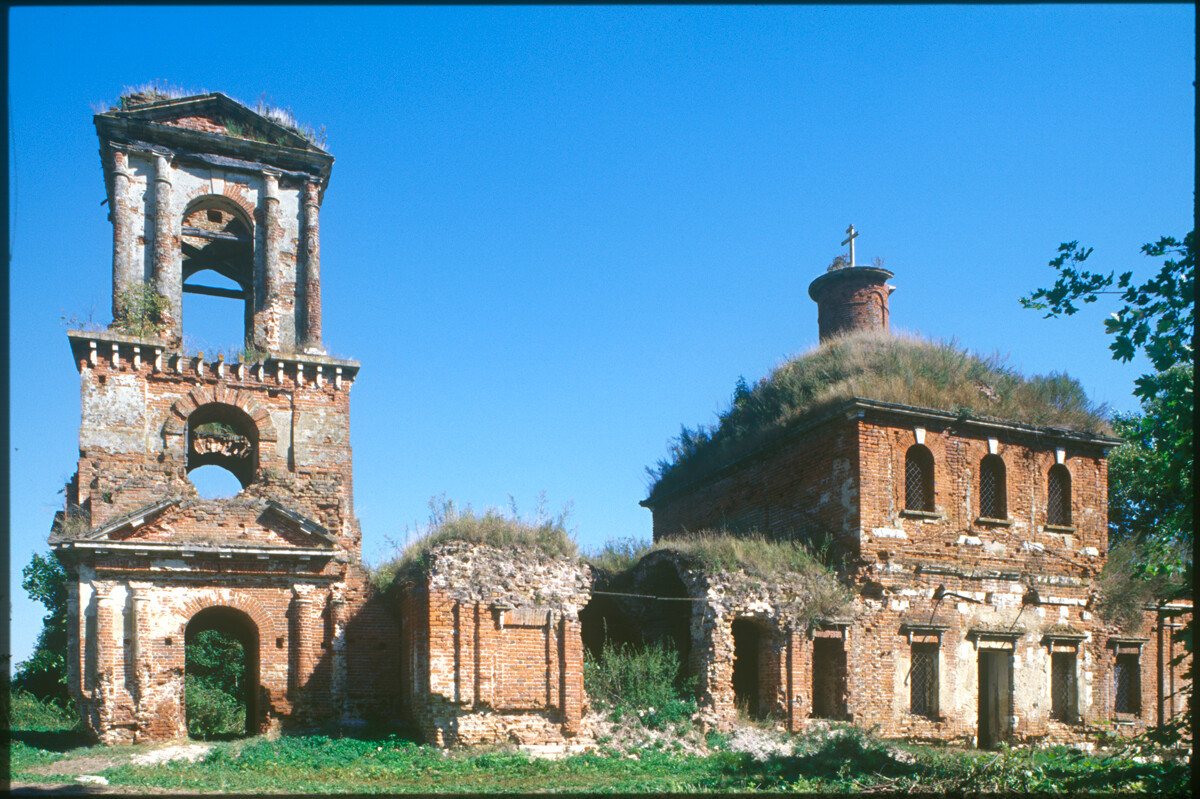
Monogarovo. Church of the Descent of the Holy Spirit, south view (before restoration). August 27, 2005
William BrumfieldOne particularly informative photograph shows a floating construction office and barracks moored on the right bank of the Oka, with a distant view of Beloomut across fields on the left bank. To the back of the camera were similar fields stretching several miles southwest to the ancient town of Zaraysk and the village of Darovoye, forever linked to the name of Fyodor Dostoevsky (1821-81).
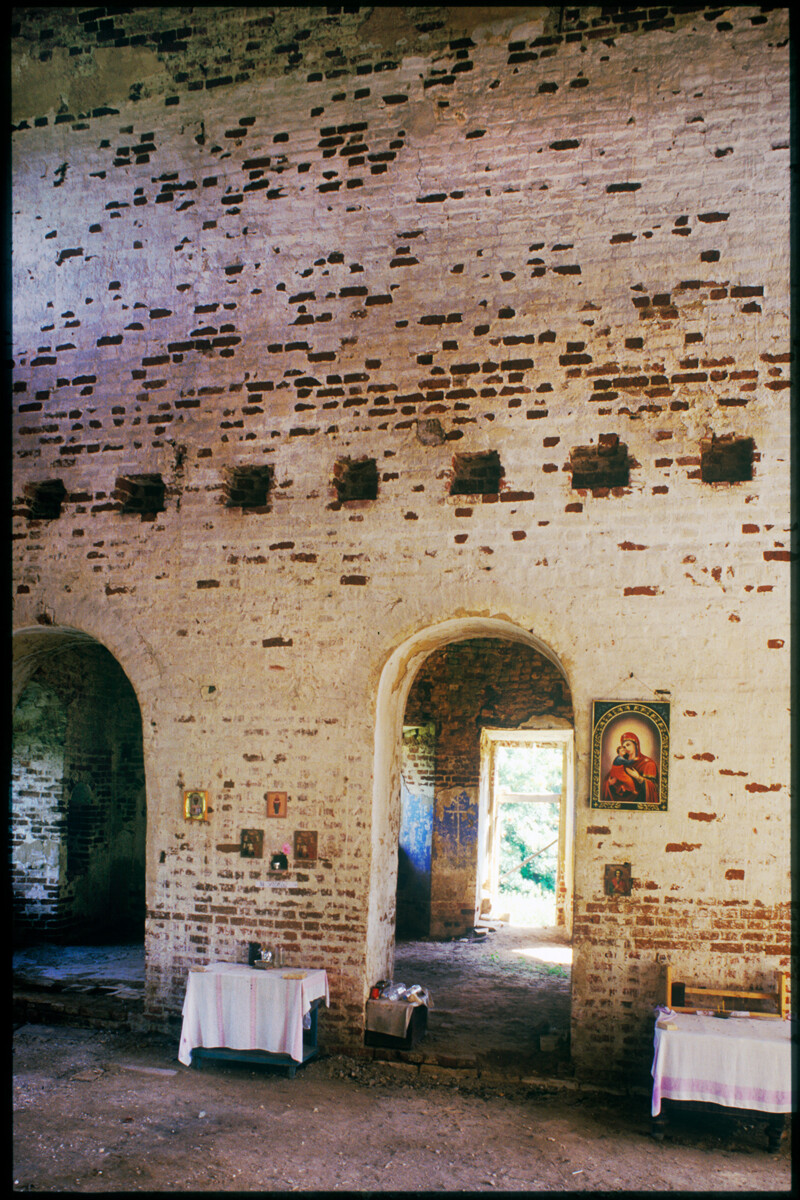
Monogarovo. Church of the Descent of the Holy Spirit. Interior, east wall with view toward apse, which contained the altar. July 22, 2006
William BrumfieldIn the 1830s, Dostoevsky spent several childhood summers at the family estate. Although modest in comparison with Leo Tolstoy’s Yasnaya Polyana, Darovoye played an important role in the formation of the great writer's character and creativity.
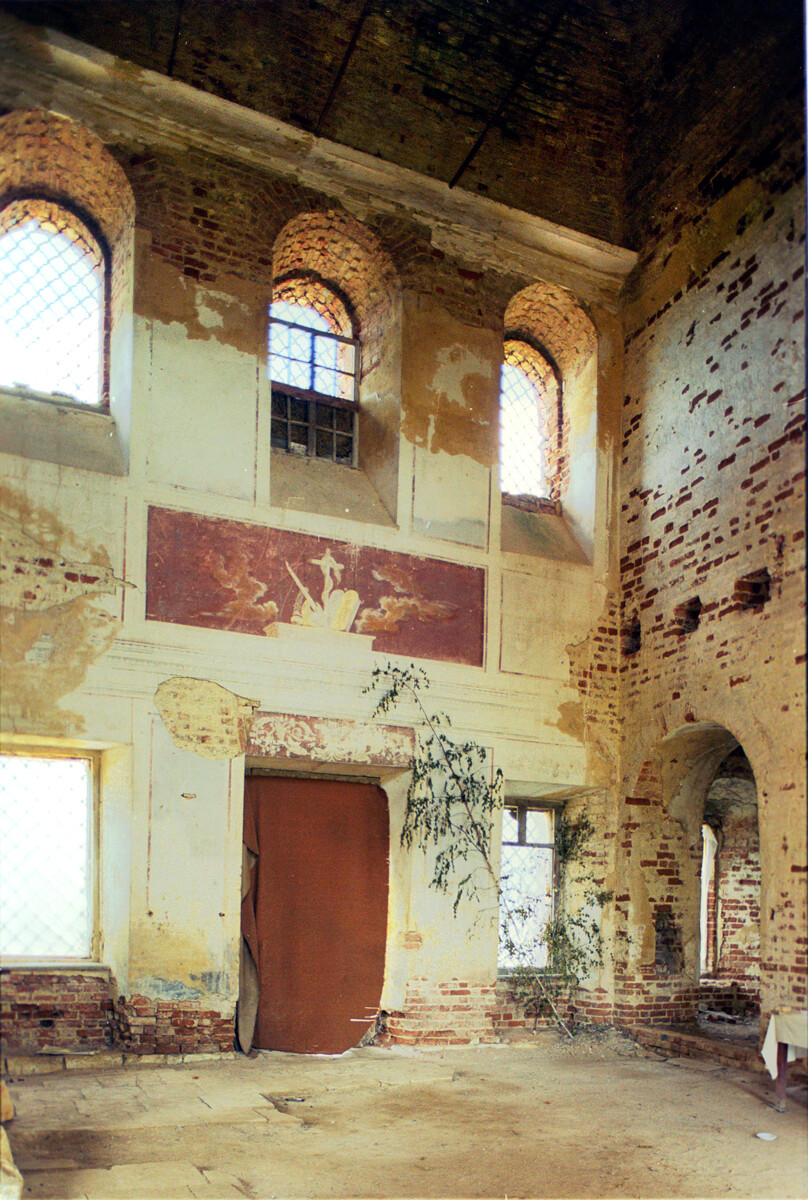
Monogarovo. Church of the Descent of the Holy Spirit. Interior, north wall with fragments of late 18th-century wall painting of religious symbols (tablets with Ten Commandments). July 22, 2006
William BrumfieldDarovoye is situated in a bucolic setting 90 miles southeast of Moscow beyond Zaraysk. The earliest reference to the village, whose name is likely derived from the word ‘dar’ (gift), dates to the early 16th century. During that period, Kolomna Region formed Muscovy's first line of defense against Tatar raids from the south and particularly from Crimea.
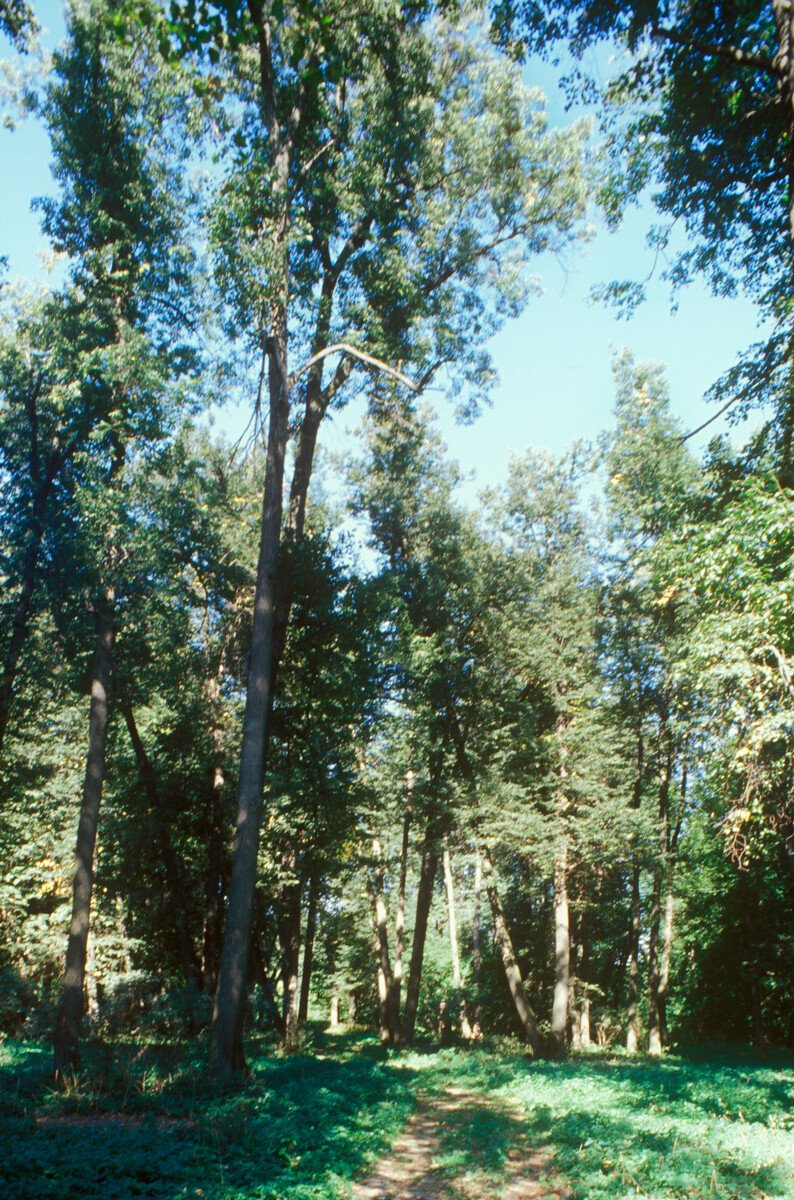
Darovoye. The Linden Grove, beloved site from Fyodor Dostoevsky's childhood. August 27, 2005
William BrumfieldDarovoye and the nearby village of Monagarovo were among a cluster of outposts that belonged to the prominent Khotyainstev family in Kolomna. Although devastated in the early 17th century during the ‘Time of Troubles’, the villages remained in their family.
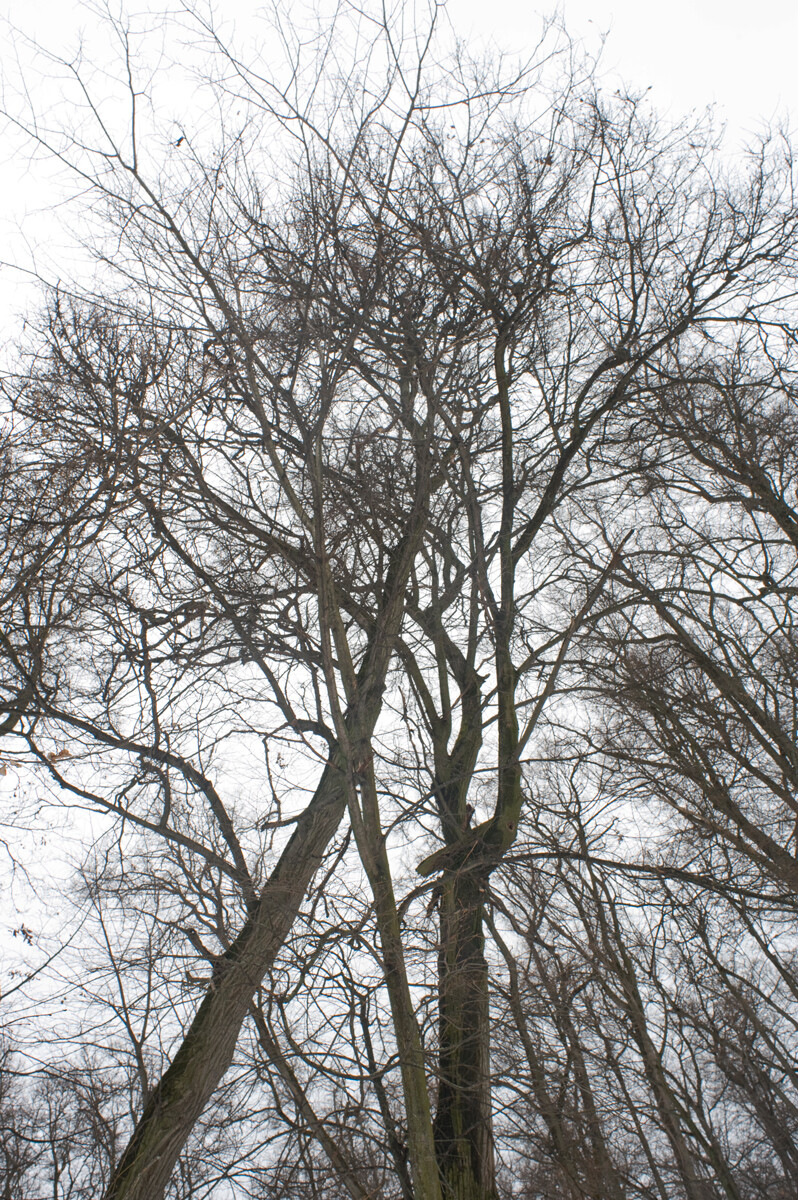
Darovoye. The Linden Grove in winter. January 3, 2015
William BrumfieldIn 1763, Vasily Khotyaintsev erected the brick Church of the Holy Spirit on the Monogarovo Estate. With a single cupola and a refectory and bell tower at the west end, the church combined traditional features with neoclassical elements of the early reign of Catherine the Great. During the Soviet period, the church was ransacked and ultimately used as a warehouse. Traces of early 19th-century wall paintings remain on the interior.
Vasily Khotyaintsev's grandson Peter was the last of the family to own the Darovoye-Monogarovo Estate. In 1830, the property came to the attention of Michael Andreevich Dostoevsky (1788-1839), a medic in state service, who was engaged in quarantine enforcement during the cholera epidemic that swept through Moscow Region that year. Already married for ten years, he and his wife Maria Fedorovna (née Nechaeva) wished to acquire a place in the country for the family.
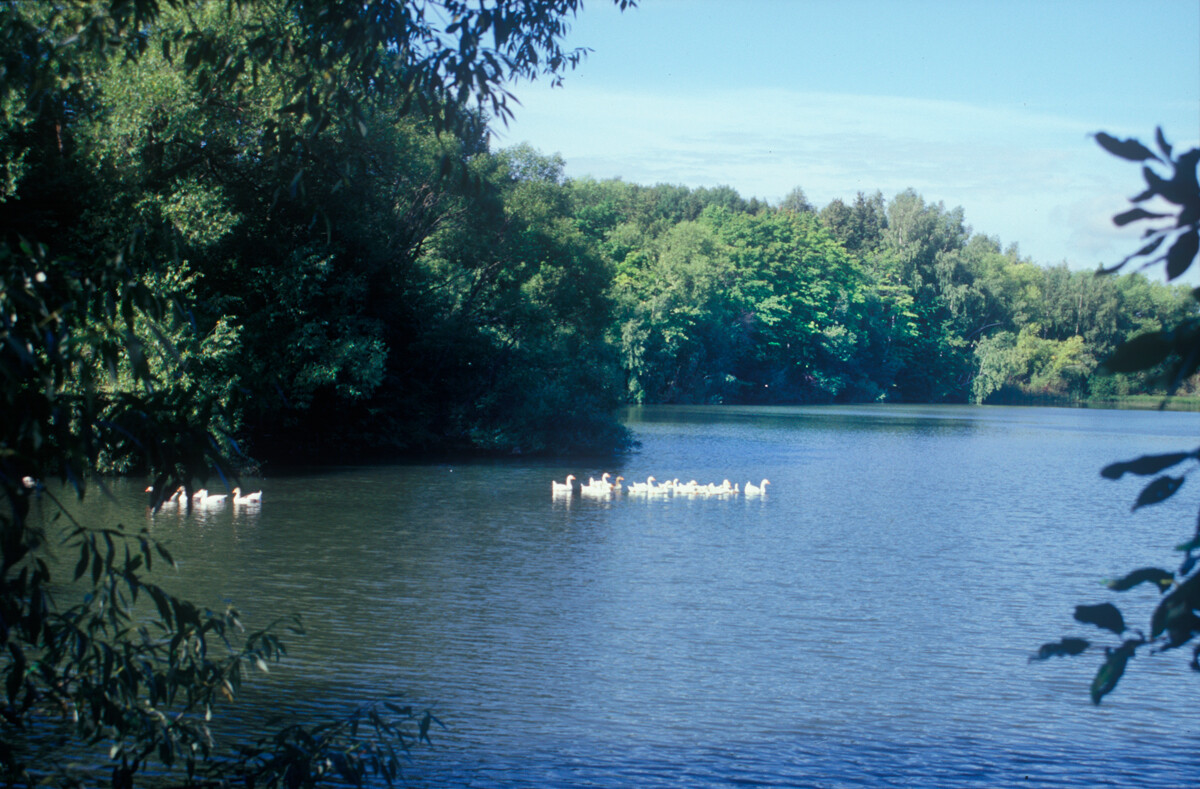
Darovoye. "Mama's Pond". August 22, 2003
William BrumfieldThe purchase was completed in 1831 and the family spent its first summer in Darovoye that year, when Fyodor was nine years old. The property consisted of over 300 hectares and Maria Dostoevskaya proved an adept manager of the limited resources available to the family.
The Dostoevsky family continued to live in an apartment at the Moscow Marinsky Pauper's Hospital, where their father served on the medical staff, but, each summer, the mother and children went to reside at Darovoye. The road to the village passed by the Zaraysk Kremlin and, near the main kremlin gate tower, there was a roadhouse from which coaches left for Moscow. Every summer, Maria would walk with her children from Darovoye to Zaraysk to post letters to her husband in Moscow.
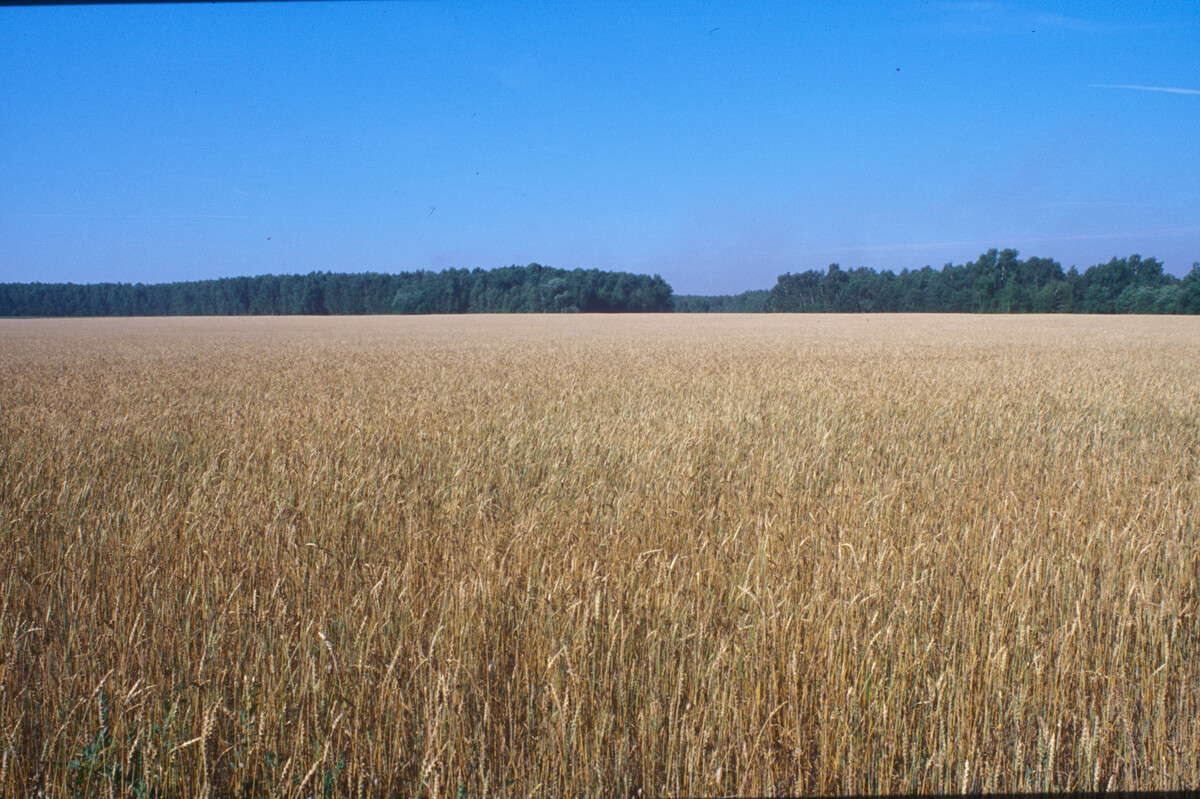
Darovoye. "Bright Field" (near the road to Cheremoshnya). August 27, 2005
William BrumfieldIn 1832, a fire destroyed much of the village and the family was forced to live in a very modest structure until their wooden house was rebuilt. In 1833, Michael Dostoevsky acquired the neighboring village of Cheremoshnya, including its 100 peasants.
Years later, Fyodor Dostoevsky would fondly remember the summers at Darovoye as a time of games with his brothers among the large linden trees and hollows on the estate. This imaginative play was stimulated by a reading of works such as Daniel Defoe’s ‘Robinson Crusoe’ and the novels of Walter Scott. On warm summer days, the children swam in Mama’s Pond, which Maria Dostoevsky had created from a nearby spring.
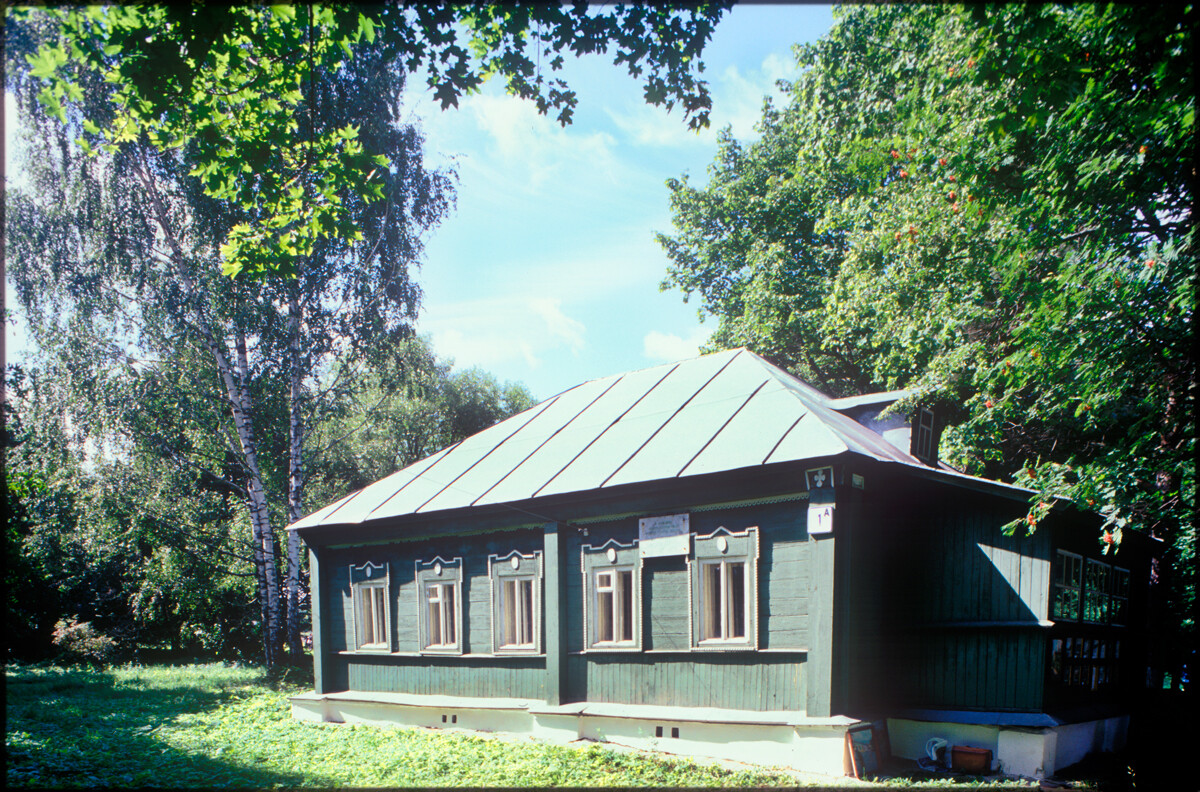
Darovoye. The "Wing". August 22, 2003
William BrumfieldThe surrounding fields also left many memories. During his Siberian exile, Dostoevsky remembered how the peasant Marei gently comforted him from fright at an imagined wolf near Darovoye. This memory of the goodness of the simple Russian people consoled Dostoevsky at a desperate time in his life, following his arrest in April 1849 for participating in a radical discussion group. Although his death sentence in December of that year was commuted at the last moment, he endured a Siberian prison until the beginning of 1854 and then served as an army private in Siberia for another three years, until his rights were fully restored in April 1857.

Darovoye. The "Wing," Interior with brick stove. August 27, 2005
William BrumfieldYet, despite his loving memories, Darovoye also had deeply tragic associations for Dostoevsky. In February 1837, his mother Maria died in Moscow from tuberculosis. Her death at the age of just 37 was a devastating blow to his father, who retired from service and sent his sons Michael and Fyodor to school in St. Petersburg. The rest of the family, including two younger sons and three daughters, moved to Darovoye.
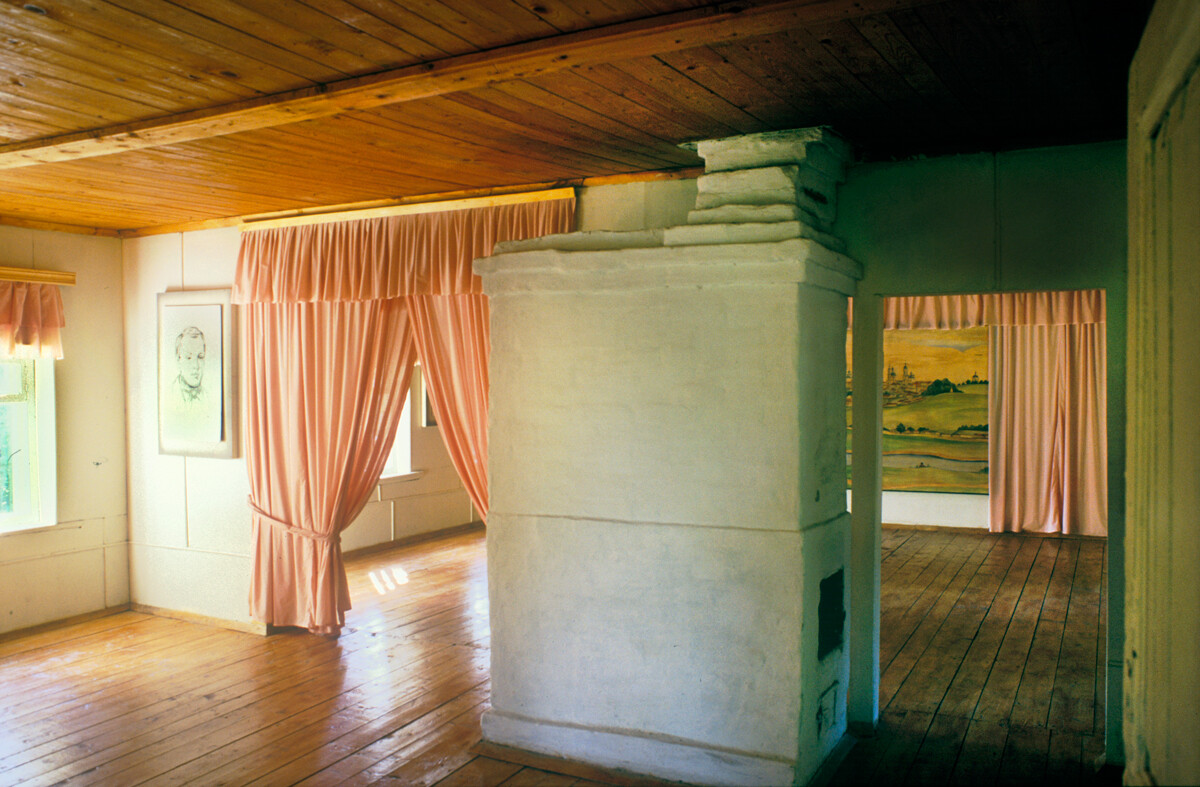
Darovoye. The "Wing," Interior with view toward the second room. August 22, 2003
William BrumfieldLife on the Darovoye Estate soon became very difficult. Grieving for his wife and beset with financial problems, the elder Dostoevsky evidently had increasingly antagonistic relations with the serfs that lived on the estate. Under circumstances that were never clearly ascertained, his lifeless body was found on June 6 (18), 1839, along the road to Cheremoshnya.
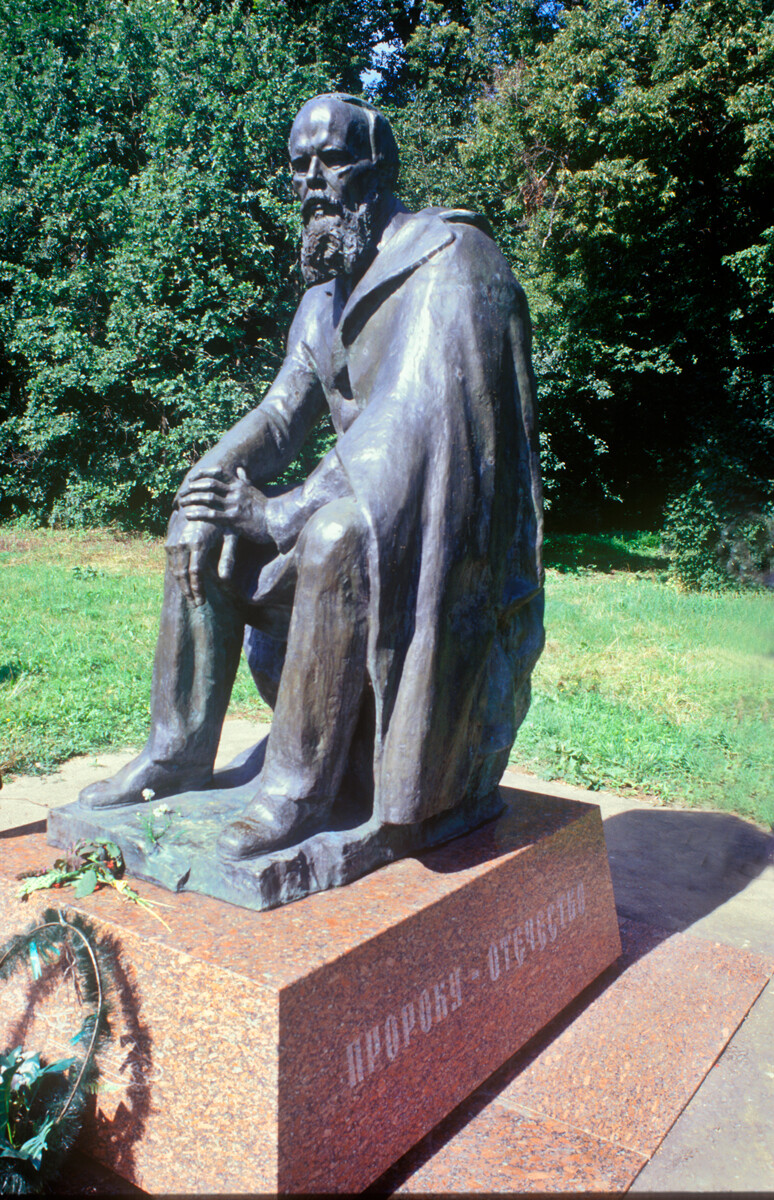
Darovoye. Monument to Fyodor Dostoevsky by sculptor Yury Ivanov (1993). August 22, 2003
William BrumfieldMikhail Andreevich Dostoevsky was buried in the cemetery of the Church of the Descent of the Holy Spirit at neighboring Monogarovo. The cemetery was vandalized during the Soviet period and the precise location of his grave has since yet to be discovered.
Following Mikhail Dostoevsky’s death, the Darovoye Estate was briefly kept in trust for his children and then passed to the younger son, Andrey. Fyodor Dostoevsky sold his share in 1844 and, by 1852, his sister Vera (married name Ivanova) had purchased all shares of the estate.
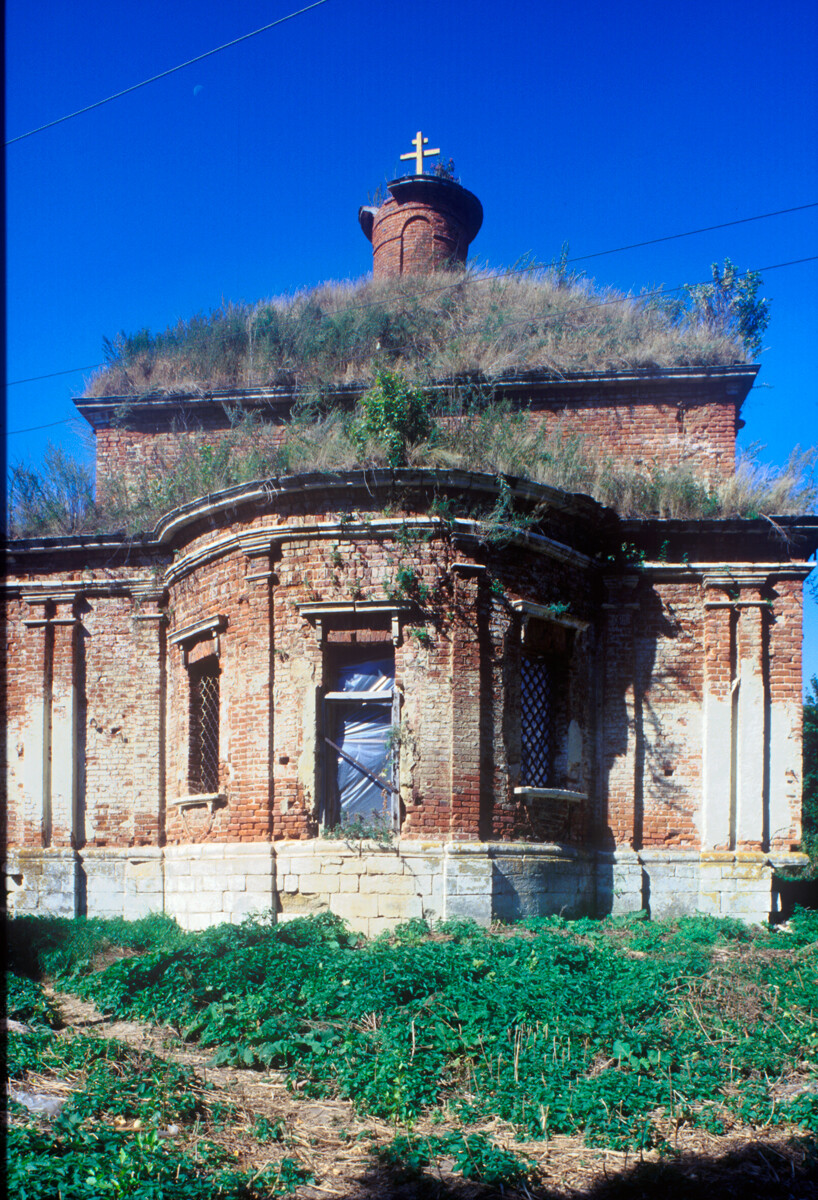
Monogarovo. Church of the Descent of the Holy Spirit, east view (before restoration). August 27, 2005
William BrumfieldUnder Vera Ivanova’s guidance, the estate gained new buildings for the Ivanov family and their guests. After many delayed plans, Fyodor Dostoevsky finally returned to Darovoye in 1877, four decades after his last childhood visit in the Summer of 1836.
Much has been written about the traumatic impact on Dostoevsky of his father’s mysterious death. Yet, Dostoevsky would always insist on the blessed nature of childhood memories associated with Darovoye. And the Darovoye area, including Cheremoshnya, would figure in the writer’s later work, particularly in the novel ‘The Brothers Karamazov’.
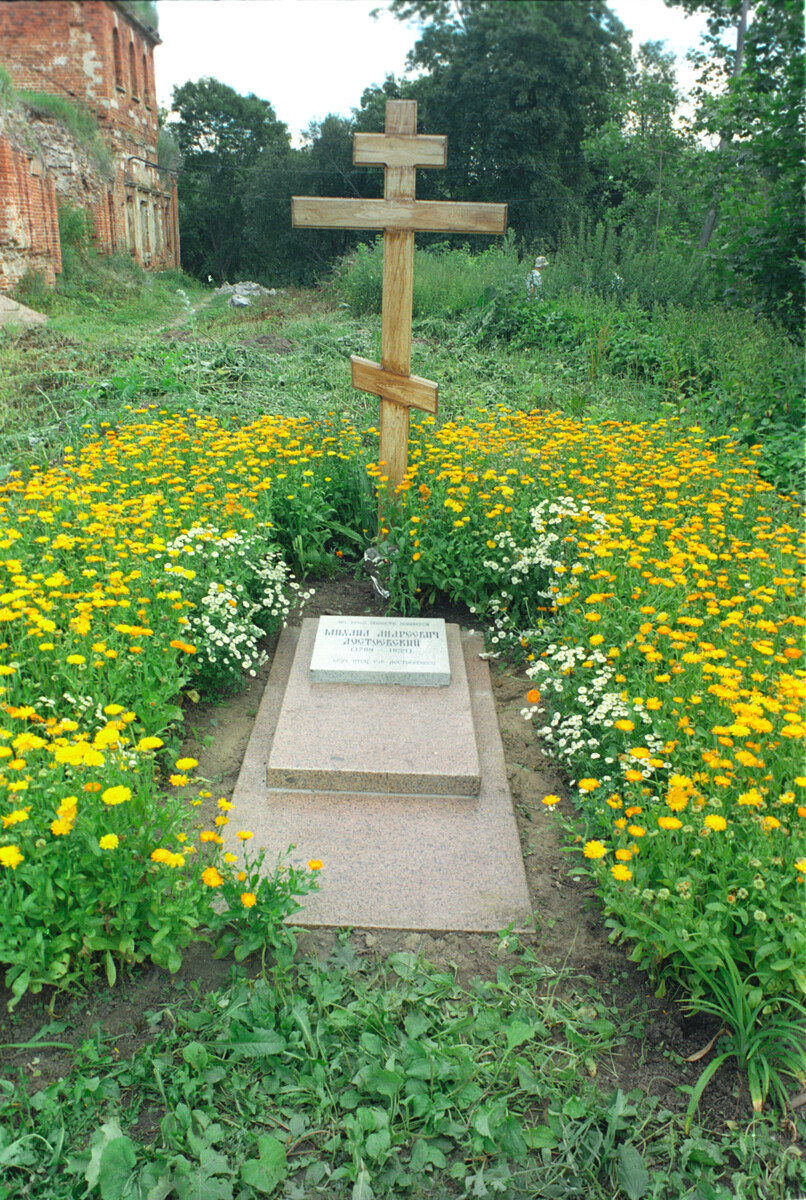
Monogarovo. Burial monument to Mikhail Dostoevsky, who was interred at the cemetery of the Church of the Descent of the Holy Spirit. July 22, 2006
William BrumfieldFollowing the death of Vera Ivanova in 1896, the estate passed into the hands of her daughters, Dostoevsky’s nieces. The only structure to have survived from the 19th century is the so-called ‘wing’ (‘fligel’). Opinion varies as to whether it appeared following the 1832 fire or whether it was built by the Ivanovs, perhaps as a guest house.
After the Bolshevik Revolution, Maria Aleksandrovna Ivanova, one of the Ivanov daughters, became the dedicated curator of the small ‘wing’, which served as a village library. But, with her death in 1929, all objects associated with the Dostoevsky family were moved to Moscow, and the ‘wing’ became a nursery for the local collective farm.
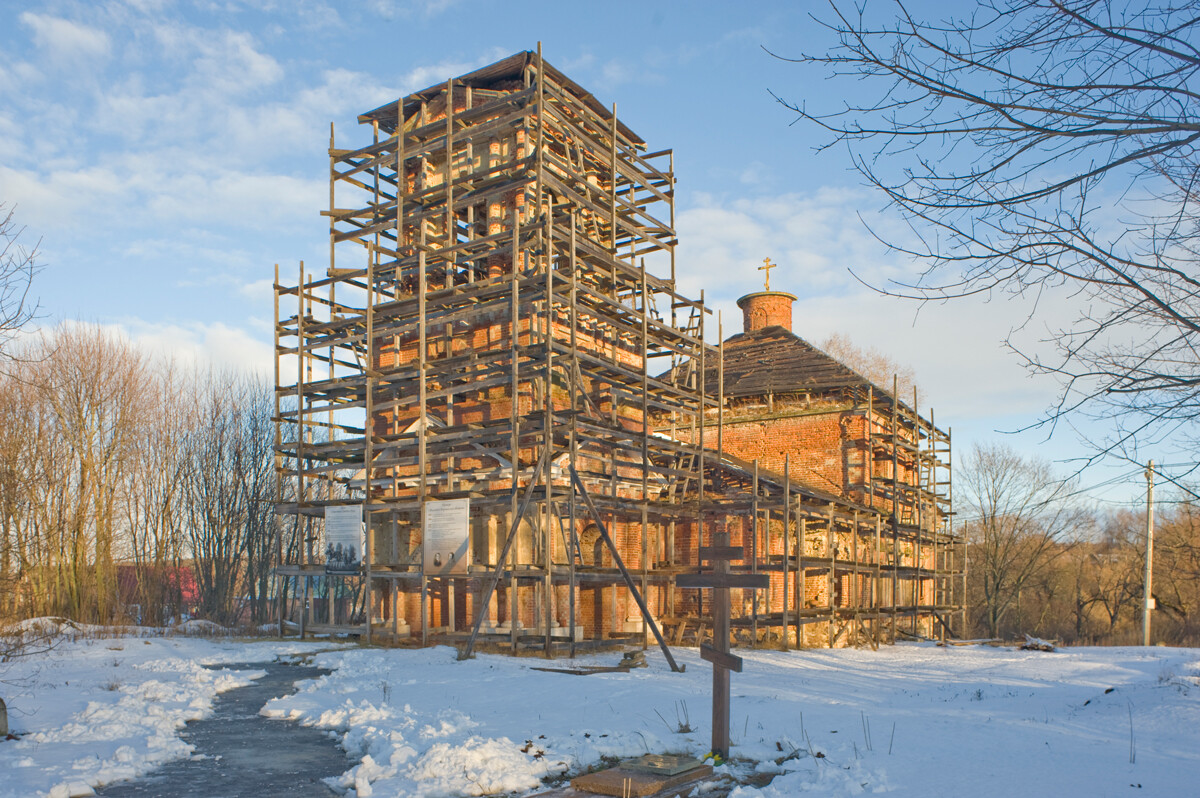
Monogarovo. Church of the Descent of the Holy Spirit, southwest view (under restoration). January 3, 2015
William BrumfieldDuring the following decades, the fate of Darovoye underwent many turns and the memorial was, at times, practically abandoned. Only in 1990 did Darovoye achieve official status as part of the historic museum complex based in the town of Zaraysk, some 12 km to the northeast.
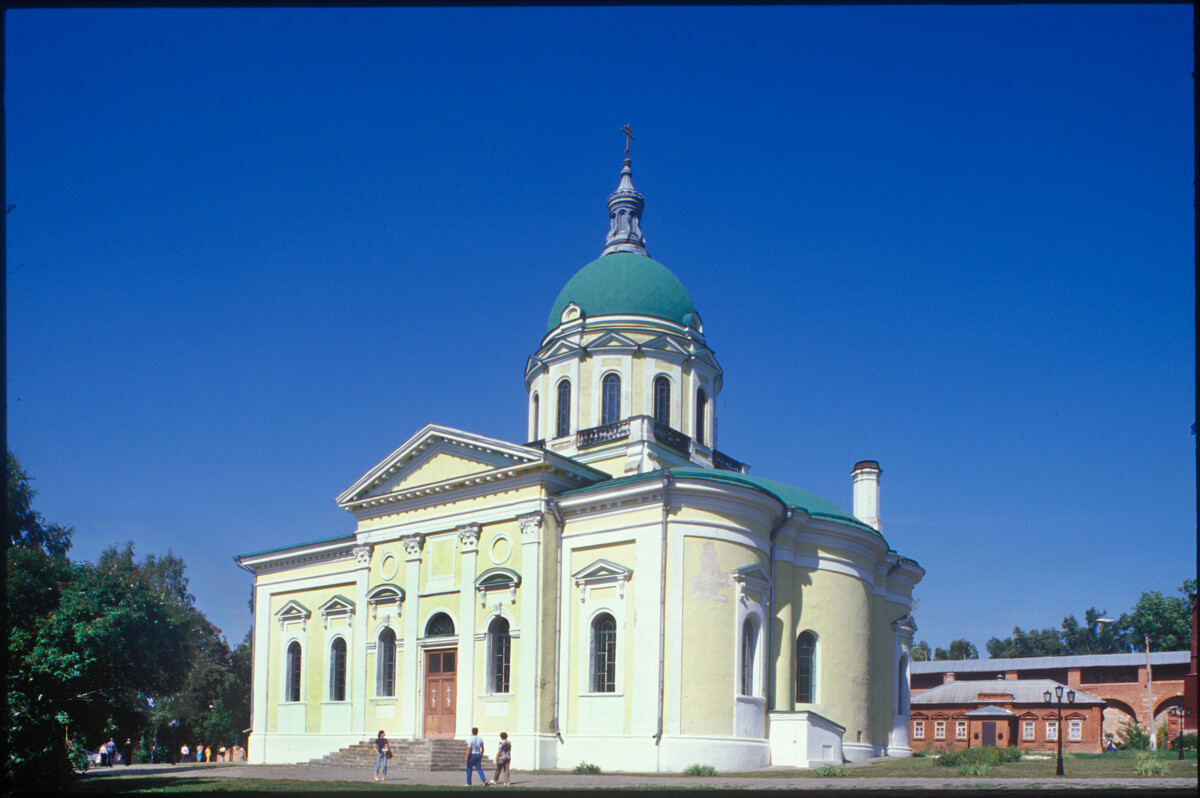
Zaraysk Kremlin. Cathedral of the Decapitation of John the Baptist, southeast view. August 27, 2005
William BrumfieldToday, Darovoye and the adjacent linden grove are carefully maintained with a broad range of public support, including scholars and students from the regional center of Kolomna. In September 1993, a monument to Fedor Dostoevsky was unveiled near the linden grove. Created by sculptor Yury Ivanov, the seated bronze figure of Dostoevsky serves as a gathering point each year for events dedicated to the great writer.
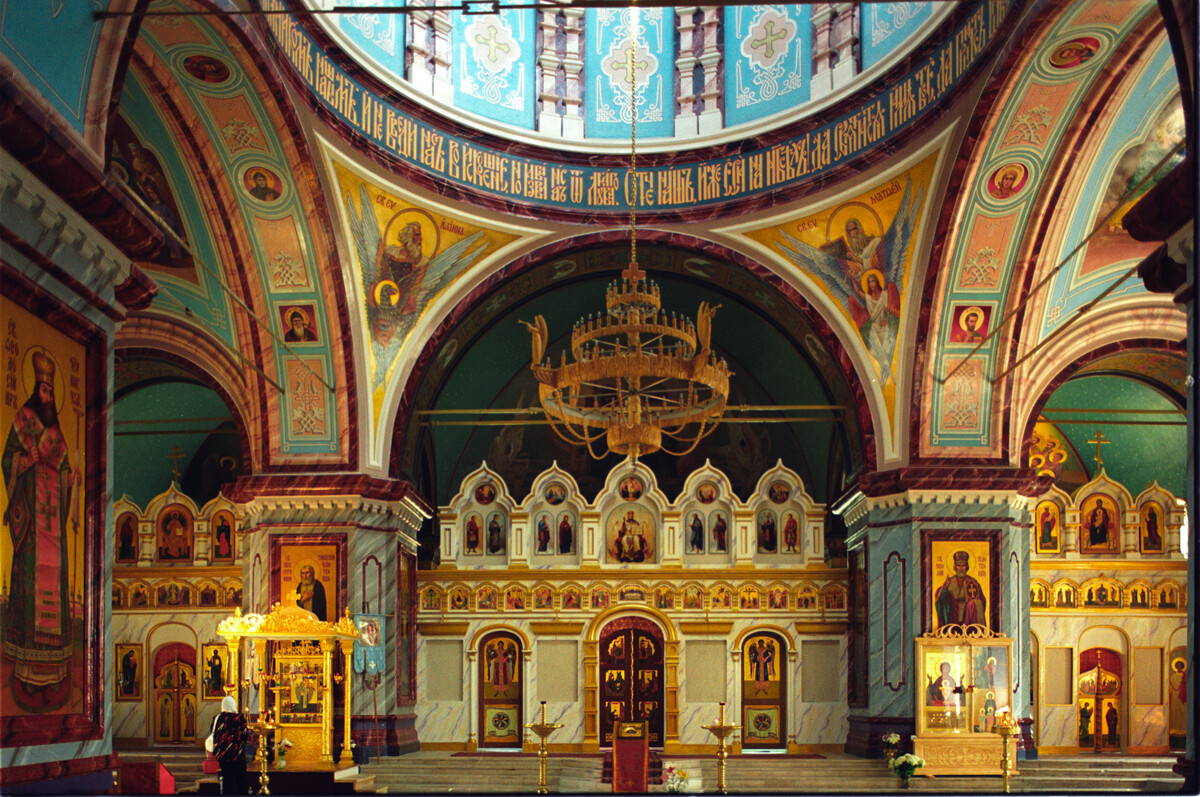
Cathedral of the Decapitation of John the Baptist. Interior, view east toward icon screen. July 22, 2006
William BrumfieldPreservation is also underway at Monogarovo. In August 2005, a stone plaque and wooden cross were dedicated near the Church of the Holy Spirit in commemoration of the burial of Mikhail Andreevich Dostoevsky in the church cemetery. Careful excavations and study of the church territory take place every summer. Although the church itself remained open to the elements, preservation efforts in the 2010s culminated with a complete restoration of the exterior in 2022.
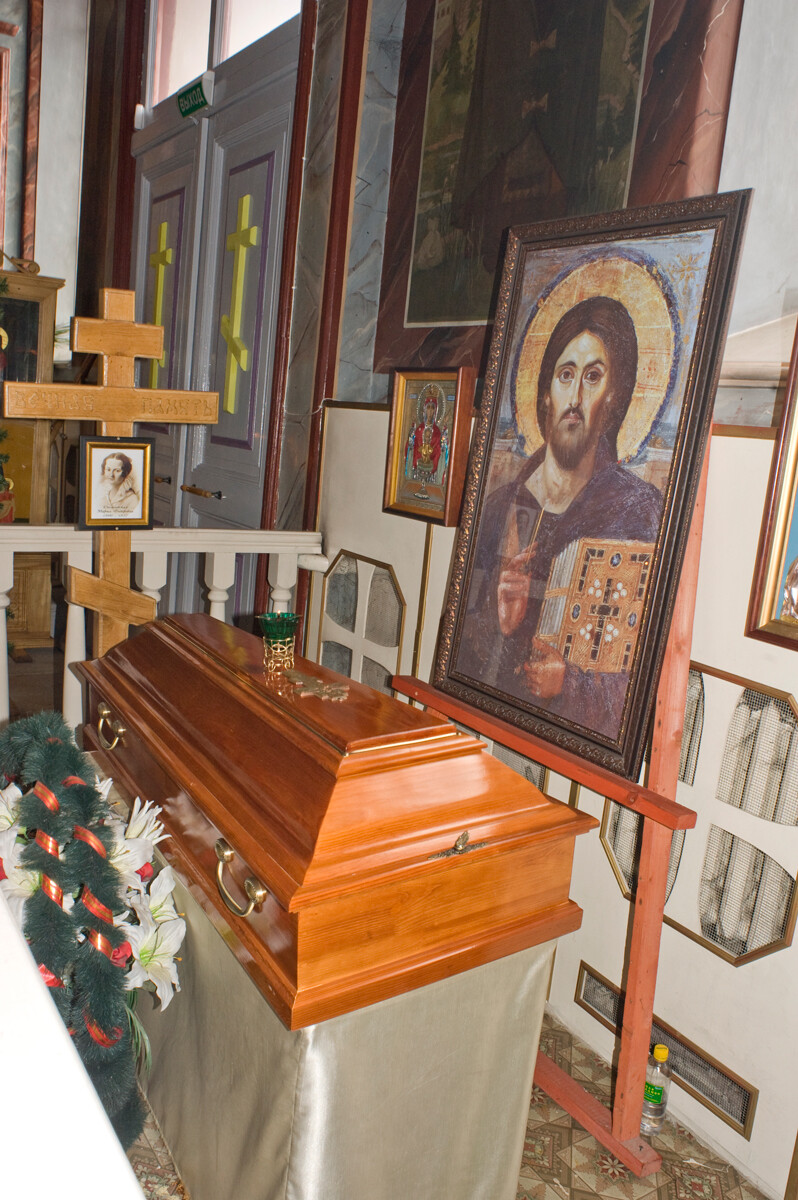
Cathedral of the Decapitation of John the Baptist. Interior, south aisle with new coffin containing remains of Maria Dostoevskaya, mother of Fyodor Dostoevsky. January 3, 2015
William BrumfieldThe remains of Maria Fyodorovna Dostoevkaya, originally buried in Moscow and vandalized during the Soviet period, now rest in a tomb at the Cathedral of the Decapitation of John the Baptist within the Zaraysk Kremlin. One can assume that Dostoevsky and his mother entered the cathedral during their many visits to Zaraysk. For Dostoevsky, the presence of Darovoye during his childhood years formed part of a web of memories of the Russian heartland.
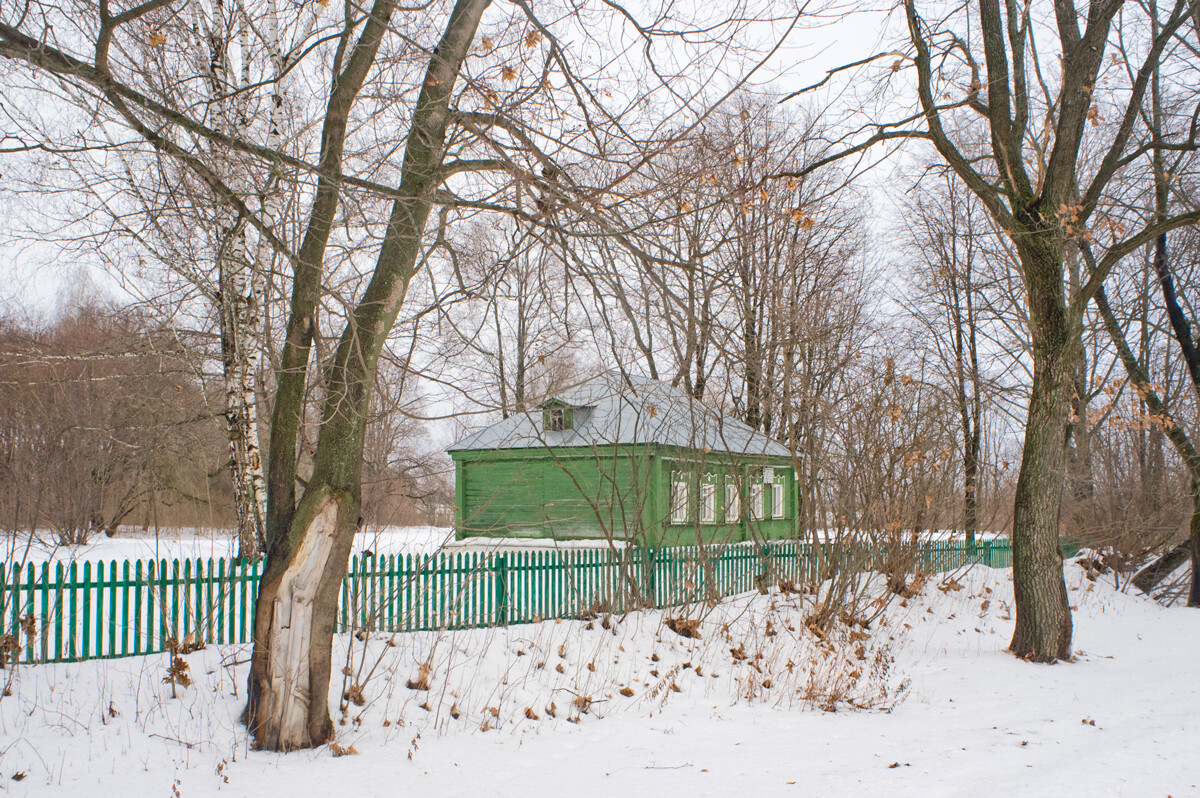
Darovoye. The "Wing," with the linden grove in background. January 3, 2015
William BrumfieldIn the early 20th century, Russian photographer Sergey Prokudin-Gorsky developed a complex process for color photography. Between 1903 and 1916, he traveled through the Russian Empire and took over 2,000 photographs with the process, which involved three exposures on a glass plate. In August 1918, he left Russia and ultimately resettled in France where he was reunited with a large part of his collection of glass negatives, as well as 13 albums of contact prints. After his death in Paris in 1944, his heirs sold the collection to the Library of Congress. In the early 21st century, the Library digitized the Prokudin-Gorsky Collection and made it freely available to the global public. A few Russian websites now have versions of the collection. In 1986, the architectural historian and photographer William Brumfield organized the first exhibit of Prokudin-Gorsky photographs at the Library of Congress. Over a period of work in Russia beginning in 1970, Brumfield has photographed most of the sites visited by Prokudin-Gorsky. This series of articles juxtaposes Prokudin-Gorsky’s views of architectural monuments with photographs taken by Brumfield decades later.
If using any of Russia Beyond's content, partly or in full, always provide an active hyperlink to the original material.
Subscribe
to our newsletter!
Get the week's best stories straight to your inbox